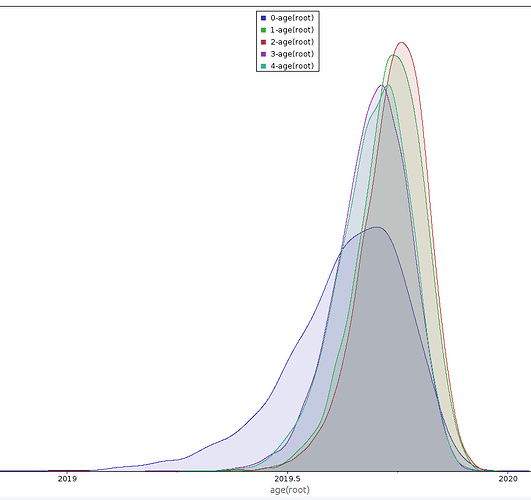The emergence of SARS-CoV-2 variants of concern is driven by episodic
acceleration of the genomic rate of molecular evolution
John Tay, Ashleigh F. Porter, Wytamma Wirth, and Sebastian Duchene*.
Peter Doherty Institute for Infection and Immunity, University of
Melbourne, Melbourne, Australia.
*email: [email protected]
Abstract
The ongoing SARS-CoV-2 pandemic has seen an unprecedented amount of
rapidly generated genome data. These data have revealed the emergence of
lineages with mutations associated to transmissibility and antigenicity,
known as variants of concern (VOCs). A striking aspect of VOCs is that
many of them involve a high number of defining mutations. Current
phylogenetic estimates of the evolutionary rate of SARS-CoV-2 suggest
that its genome accrues around 2 mutations per month. However, VOCs can
have around 15 defining mutations and it is hypothesised that they
emerged over the course of a few months, implying that the evolutionary
rate would be several fold higher. A plausible scenario that is
difficult to demonstrate empirically is that such rapid evolution has
occurred within immunocompromised patients over a short period of time.
We analysed genome sequence data from the GISAID database to assess
whether the emergence of VOCs can be attributed to changes in the
evolutionary rate of the virus and whether this pattern can be detected
at a phylogenetic level using genome data. We fit a range of molecular
clock models and assessed their statistical fit. Our analyses indicate
that the emergence of VOCs is driven by an episodic increase in the
evolutionary rate of around 6-fold the background phylogenetic rate
estimate. Our results underscore the importance of monitoring the
molecular evolution of the virus as a means of understanding the
circumstances under which VOCs may emerge.
This is ongoing work and we will update it as we conduct further analyses.
Keywords: SARS-CoV-2 molecular evolution, variants of concern,
molecular clock, Bayesian model selection.
VOC molecular clocks ms draft (280.5 KB)
